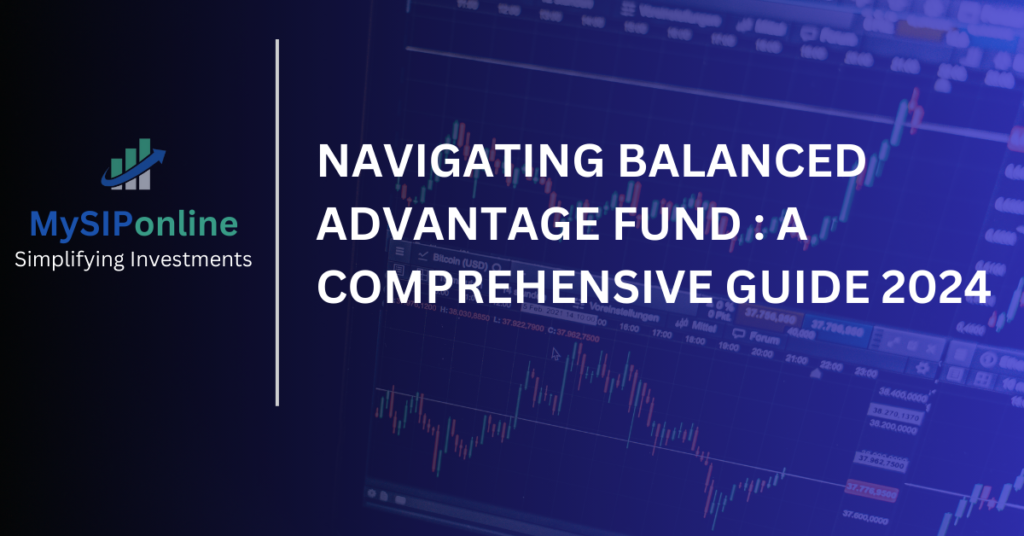INTRODUCTION
These funds aim to provide investors with a comprehensive investment portfolio. Combining the stability of bonds with the potential for earnings from stocks. They are crafted to deliver a blend of both fixed-income and equity securities.
Balanced Advantage Funds have emerged as the go-to choice for investors seeking a comprehensive strategy for building wealth. These funds combine the advantages of debt and equity investments and are valued for their adaptability to market fluctuations. We will examine Balanced Advantage Funds in detail in this article. Highlighting their benefits and differentiating them from Dynamic Asset Allocation plans.
WHAT ARE THE BENEFITS OF BALANCED ADVANTAGE FUND?
DYNAMIC ASSET ALLOCATION
- Distributing a portfolio’s funds among several asset classes, such as stocks, bonds, and cash alternatives, is known as asset allocation, and it is a fundamental investment approach.
- The main objective of Asset Allocation is to match an investor’s time horizon, risk tolerance. And financial objectives with the risk and return profile of an investment portfolio. Investors spread across many asset classes in an effort to reduce the volatility and possible losses linked to a single kind of investment. The investor’s risk tolerance, investment objectives, and current market conditions all influence the allocation of each asset class.
- A well-designed asset allocation plan offers a consistent and well-rounded approach to wealth management by working to reduce risk while increasing returns.
REDUCTION OF RISK
- While investors need to assess their risk tolerance, investment goals, and specific features of any considered balanced portfolio diligently, these funds play a role in minimizing risk.
- Additionally, market conditions and the historical performance of individual investments can influence the overall risk and return linked with balanced funds.
NEUTRAL-MARKET APPROACH
- This is an approach to investing that aims to generate returns regardless of the direction of the market as a whole.
- The main objective is to take both long and short positions at the same time to balance or protect against the effects of market fluctuations.
- This strategy emphasizes the ability of general market patterns by separating the fund manager’s or investor’s experience in the selection of specific securities.
AUTOMATIC REBALANCING
- Investment portfolios with automatic rebalancing features regularly rebalance the assets to their original or planned structure.
- The goal is to maintain the portfolio’s targeted risk and return characteristics while minimizing any major variations from the target risk profile.
- This typically involves buying or selling assets inside the portfolio to ensure that the combination of assets is by the investor’s original goals.
TAX EFFICIENCY
- Tax efficiency refers to the fund’s ability to optimize investor returns while minimizing the impact of taxes on those gains.
- These funds, which are well-known for their flexible approach to Asset Allocation. Aim at finding a balance between debt and equity.
- Investors use common tax-efficient strategies, including strategic asset placement and utilizing investment losses to cover gains through tax-loss harvesting. Reducing taxes on investment gains and income is the main goal to increase profits.
IS BALANCED ADVANTAGE FUND REFERRED TO AS DYNAMIC ASSET ALLOCATION?
Yes, consider a Balanced Advantage Fund as a type of Dynamic Asset Allocation Fund. The term “Balanced Advantage” typically falls under the broader category of funds that use dynamic asset allocation strategies. In this variety of, the fund manager dynamically adjusts the allocation between equity and debt instruments based on market conditions. Economic indicators, and other factors to optimize returns and manage risk. Therefore, while Balanced Advantage Funds specifically focus on maintaining a balance between equity and debt. They operate within the framework of dynamic asset allocation.
CONCLUSION
In conclusion, investors can choose from a strong combination of risk control and potential growth with this category of funds. The strategy of adjusting assets dynamically, combined with the ability to handle different market situations. Makes these funds attractive for those wanting a balanced investment plan. Before including these funds in their investing strategy. Investors should consider their financial objectives and risk tolerance as well as the fund’s unique features. Consulting with financial specialists can provide valuable insights based on personal objectives and requirements.
Additionally, this fund offers varied plans for different category investors. Plus, through the Online Systematic Investment Plan (SIP) Mutual Fund Scheme which provides regular and systematic regulations of the financials.





More Stories
How to Choose the Best E-commerce Courier Service in UAE
Essentials Hoodie – Stylish, and Perfect for Daily Wear
Diamond Cart Vape Cartridges: Redefining Luxury in Vaping